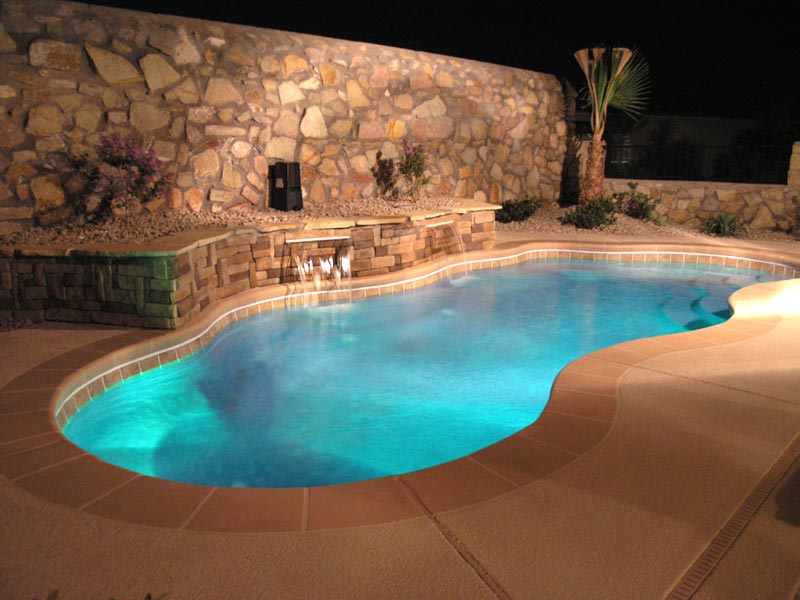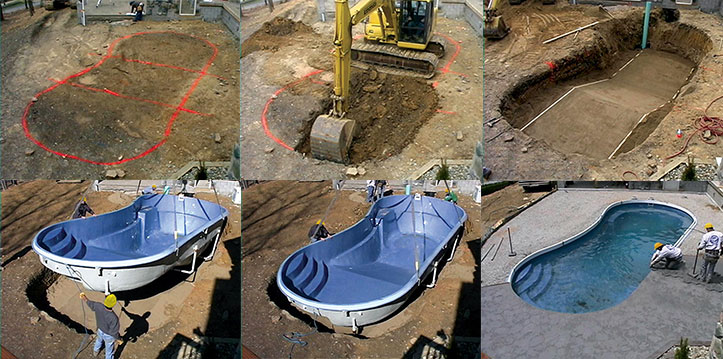Historically, poured concrete formed in large slabs has been the material used for swimming pool patios. However, problems with cracking and the difficulty of repairs, along with the fact that concrete retains heat that can be painful on bare feet, have led many pool owners to look for other decking options.
The ideal patio material should:
- Provide adequate traction even when wet
- Be gentle on bare feet
- Minimize heat absorption
Thankfully, there are many alternatives to concrete available today.
Foot-Friendly Pool Patio Options
What type of deck surface makes the most sense around your pool? Here are some quick descriptions of the more common ones to give you food for thought:
Spray-On Coatings
One great option for getting the patio you want is to use cement-blended spray-on coatings that are applied to an existing deck surface. These coatings retain less heat than concrete slabs, come in a variety of colors, and can be textured to provide good traction and prevent slipping.
Natural Stone
Natural stone can be set on top of a concrete slab or a bed of compacted aggregate. Lighter-colored stones do not retain excessive heat and their texture provides a good no-slip surface.
Rubber
A relative newcomer as far as patio materials go, rubber surfaces come in a wide range of colors and surface textures. They are soft and foot-friendly, and are designed to withstand the elements. They can be customized in many ways including with logos or patterns.
Manmade Pavers
Precast concrete pavers are made in an almost unlimited variety of sizes, shapes, and colors, and offer varying degrees of traction and heat retention. Cracking is not a problem with this form of concrete, as the pavers can move independently to accommodate shifting of the surface on which they’re installed.

Wood
Exotic hardwoods are becoming more popular as a pool decking material for those who prefer a natural look. Wood retains less heat than concrete and can be textured so as not to be slippery. Be aware that wood does require a high degree of maintenance in order to keep it in good shape.
Unglazed Tile
Thin red clay tiles often called quarry tile are another popular option. Because they are not glazed, they provide good traction, and they retain less heat than concrete.
Brick
Not as common as it once was, brick is still a good choice in some cases, especially when it is meant to provide an architectural accent to an older or historic home. Brick comes in many colors, including lighter, heat-reflecting shades, and there are varieties with relatively smooth surfaces.
A Note on Regulations
Be aware that there are EPA requirements in some areas that cover the types of surfaces that can be installed. Be sure to ask your contractor about any LEED regulations that may be in effect.
Every great pool deserves the perfect patio. We’re happy to share our insights and stories from our customers on their experiences as you consider your options. Contact a pool expert near you for more information!







My husband and I have been saving up to build a pool in our backyard as our daughters won’t stop asking for one since last year. Thanks for mentioning here the idea of setting natural stone over a concrete slab for the pool deck to make the area heat and slip resistant. We might just consider it because I also like how it would look along with other pool accessories we had in mind.
Hi Claire – Glad you enjoy our content! Make sure to subscribe via the pink box below to keep updates coming straight to your inbox. Thanks.
P.S. Sounds like your daughters are full of great ideas.
Do you have an idea on the cost to do rubber? My kids have it on their playground and I like the idea just wanted to know if its within budget.
Hi Will – Thanks for reaching out. We always recommend discussing your project with a local independent builder to identify costs related to a specific material. You can locate one here: https://www.lathampool.com/contact-us/speak-to-a-dealer/